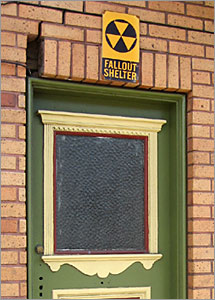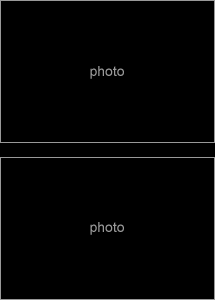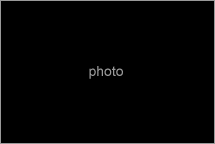| About Fallout Shelter sf
Marcus had his first exposure to screen printing in a high school graphics class. During this time, he learned the fundamentals of printing flats and t-shirts, as well, using an offset press.
After several jobs as a sign painter for record stores, a display artist for a major San Francisco department store and countless odd jobs, Marcus worked in several Bay Area screen printing shops. It was in these print shops that he gained valuable experience in the art of screen printing.
While working for these screen printing shops, he set up a small print shop in his basement studio on Market Street. There, he printed shirts and stickers for friends and bands he knew.
To this day, Marcus continues to learn about the art of printmaking. He has studied painting and etching, and continues to do so. Marcus currently works and lives in San Francisco with his wife and daughter.
About the Equipment
[Equipment list goes here.]
About the Shop
 |
 |
 |
| Fallout Shelter Entrance |
 |
[caption goes here] |
|
 |
 |
 |
| [caption goes here] |
 |
[caption goes here] |
About Screen Printing1
Silk screen printing has its origins in simple stencilling, most notably of the Japanese form (katazome). The modern silk screen process originated from patents taken out by Samuel Simon in the early 1900s in England. This idea was then adopted in San Francisco, California, by John Pilsworth in 1914 who used a silk screen to form multicolor prints in much the same manner as silk screening is done today.
Silk screening took off during the First World War as an industrial process for printing flags and banners. The use of photographic stencils at this time further increased the processes versatility and encouraged wide-spread use.
Screen printing is more versatile than traditional printing techniques. The surface does not have to be printed under pressure, unlike etching or lithography, and it does not have to be planar. Screen printing inks can be used to work with a variety of materials, such as textiles, ceramics, metal, wood, paper, glass, and plastic. As a result, screen printing is used in many different industries, from clothing to product labels to circuit board printing.
| 1 |
 |
Wikipedia contributors (2006). Screen-printing. Wikipedia, The Free Encyclopedia. Retrieved 20:38, April 30, 2006 from http://en.wikipedia.org/w/index.php?title=Screen-printing&oldid=50683979. |
 |